A wedding in Vietnam is something not to be missed: the excitement, the ceremonies, and the food! It is one of the rare occasions when a family affair becomes a social event, something remains unchanged despite how much time has passed since the early 20th century. So, what about the things that have changed? In this post, we’re going to explore how Vietnamese wedding customs have shifted through the early 20th century, the 50s – 70s, the “Subsidy” era, the 90s – early 2000s, and the modern days.
The Vietnamese Wedding Attire
Early 20th Century
The early 20s marked a time when the French influence was on everything. As can be seen from below, the bride opted for elegant Lemur style “ao dai”, and the groom dressed to impress with a bow tie and impeccable tuxedo.

The 50’s – 70’s
The American war was at its height, forcing Vietnamese people to practice moderation in everything, including weddings. The image of a bride in a simple white shirt and black pants, alongside her husband-to-be in a simple military uniform, is extremely iconic to people born at the times.

For those who could afford a proper ceremony, “ao dai” remained the go-to option for the bride. However, the wife-to-be exchanged the relaxed, straight-cut dress to a more body-hugging type, reflecting the liberation (of the generation). The groom went for a clean-cut suit, adorned with a flower pin.

The “Subsidy” Era (after 1975 – before 1986)
The moderation practice continued in this era due to the slow recovery of the country from the American war. Despite the situation, the bride tried to look best for her wedding by wearing “ao dai” and a veil. The groom’s number one choice was still the suit and maybe a flower pin/pocket square.
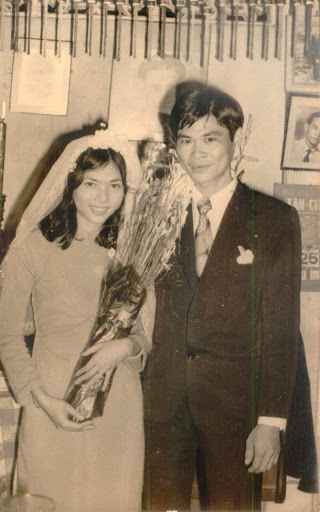
The 90’s and Early 2000’s
Wedding attire from this era reflected the country’s economic boom. Big dresses, big flower bouquets for the bride, and the fancy tux also made a comeback.
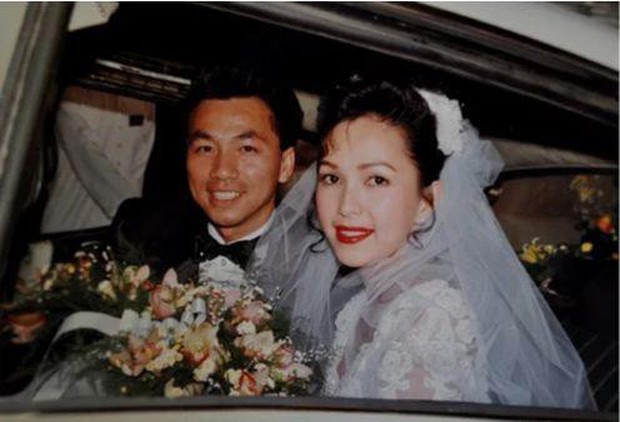
Modern days (2010’s – )
“Cover-up” is no longer the must-do dress code, and so the bride can opt for something more daring like cut-out dresses. The groom can either go simple with a dress shirt and dress pants combo or even go casual by wearing jeans.

Vietnamese Wedding Food
Early 20th Century
This is when the family can show off their wealth and dazzle their guests with over-the-top wedding food. The typical formula is usually a set of six plates and four bowls, paired with top quality rice wine.
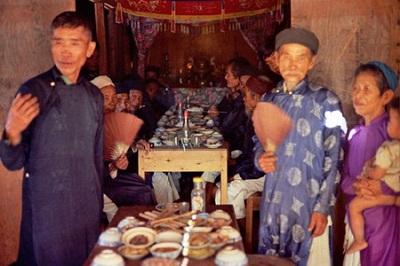
The 50’s – 70’s
The six dishes and four bowls formula was no longer in style, mostly due to the war’s adversity. However, families would still try to manage as many delectable dishes as they could.
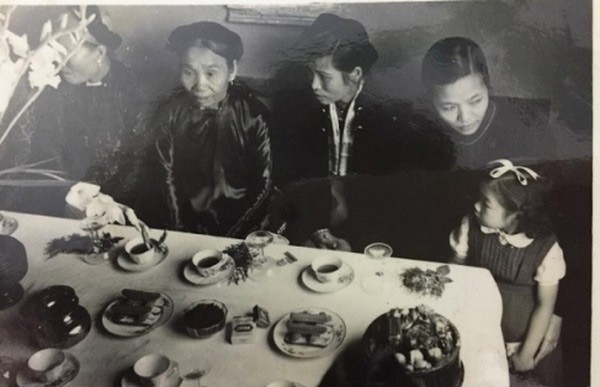
The “Subsidy” Era (after 1975 – before 1986)
Everything was subsidized and it was incredibly difficult to even gather enough ingredients for fancy wedding food. However, despite the hardship, families would try to have at least a boiled chicken dish, sticky rice, candies, and cigarettes.
The 90’s and Early 2000’s
Luscious wedding food officially came back thanks to a higher living standard. The number of dishes could go up to ten or twelve, including chicken, fish, pork, and more. The guests were surely in for a treat!
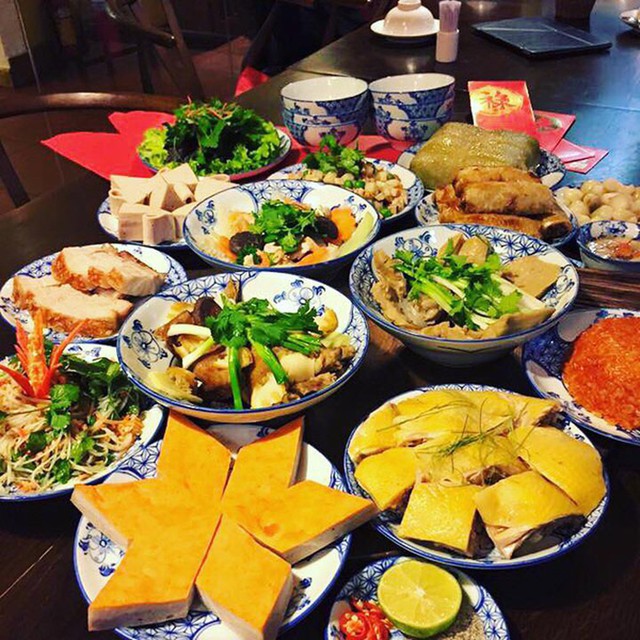
Modern Days (2010’s – )
A western-inspired menu with three courses gradually becomes the standard for a fancy wedding. However, the difference from Western style was that instead of serving course-by-course, the food provider may be asked to present all dishes at once.
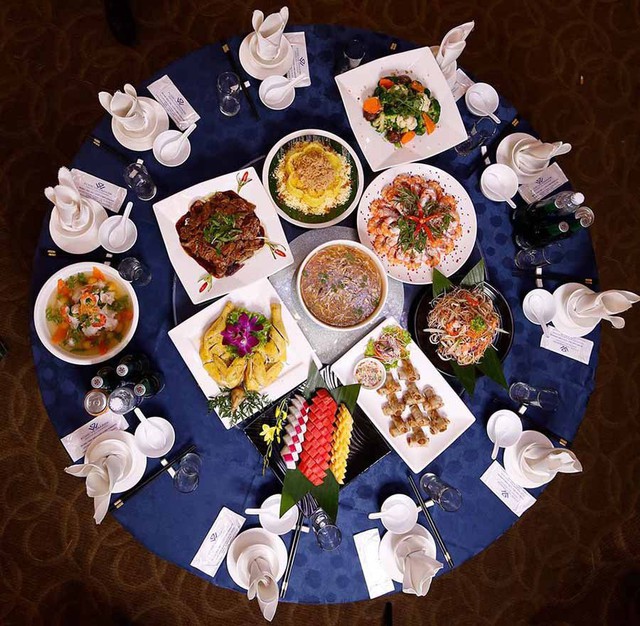
The Vietnamese Wedding Venue
Early 20th Century
Weddings in the early 20th century were typically organized at home. However, the French influence did make a rare exception for people of the elite circle to throw a wedding party at a hotel.
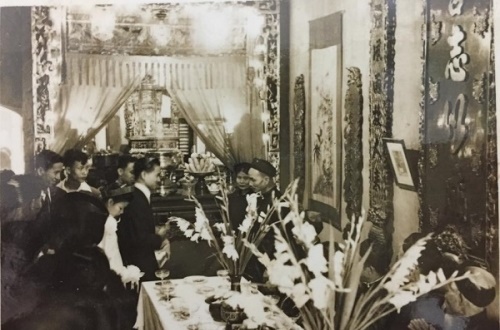
The 50’s – 70’s
Hotels officially became a favorite for weddings in big cities, while communal houses remained the designated venue for weddings in the countryside.
The “Subsidy” Era (after 1975 – before 1986)
The country entered a recession post-American war, causing people to live in moderation. As a result, wedding venues returned to their origin: the privacy of home.
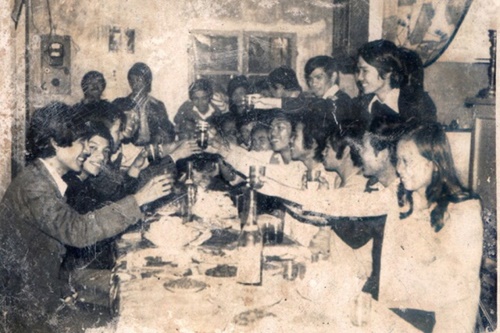
The 90’s and Early 2000’s
5-star hotels and glam wedding centers were back to be the venue of the day!
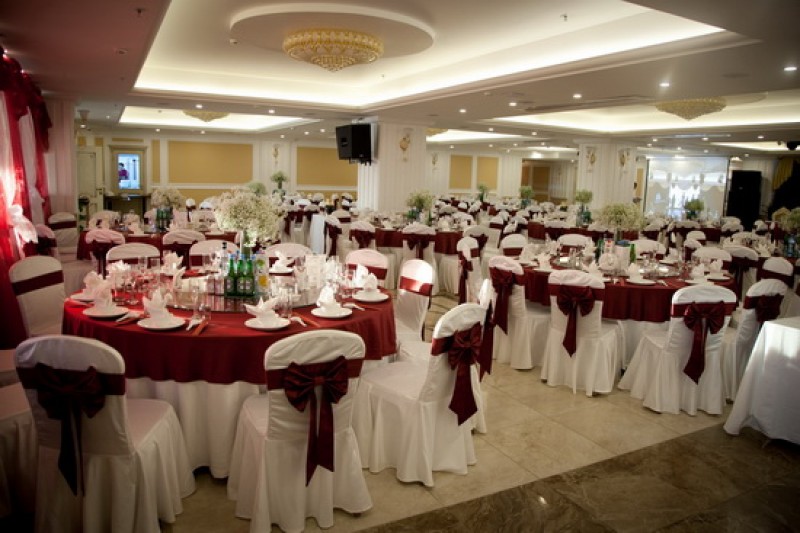
(source, laodongthudo.vn)
Modern Days (2010’s – )
The modern days see such diversity in venues for weddings. Although couples still enjoy exchanging vows at home, at a hotel or a wedding center, they may opt for something out-of-the-ordinary like the beach, a farm, a riverbank, a rooftop bar…etc.
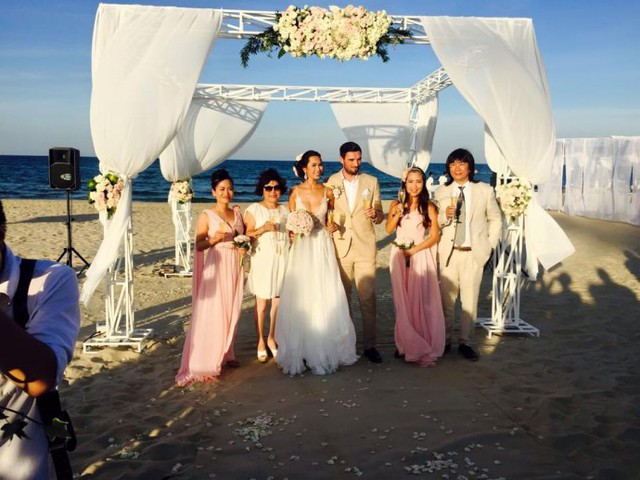
(source, giadinh.net.vn)
The Music
Early 20th Century
Wedding music was not popular among commoners. However, the rich would emulate the royal style and hire a band to play on their children’s big day.

(source, wikipedia.com)
The 50’s – 70’s
Wedding bands started to see a rise in numbers as weddings of this era welcomed more western influence. Thanks to robust growth in the number of songwriters, couples got more options with traditional tunes, trending Vietnamese songs, and even Western songs.
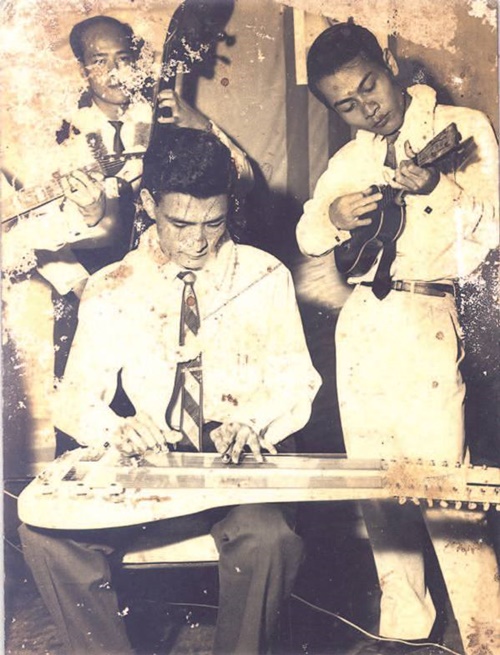
(source, doisongphapluat.com)
The “Subsidy” Era (after 1975 – before 1986)
Instead of hiring a wedding band, the newlyweds would invite their friends to play a tune. Given the sensitive post-war situation, people would go for Vietnamese songs that were allowed at the time.
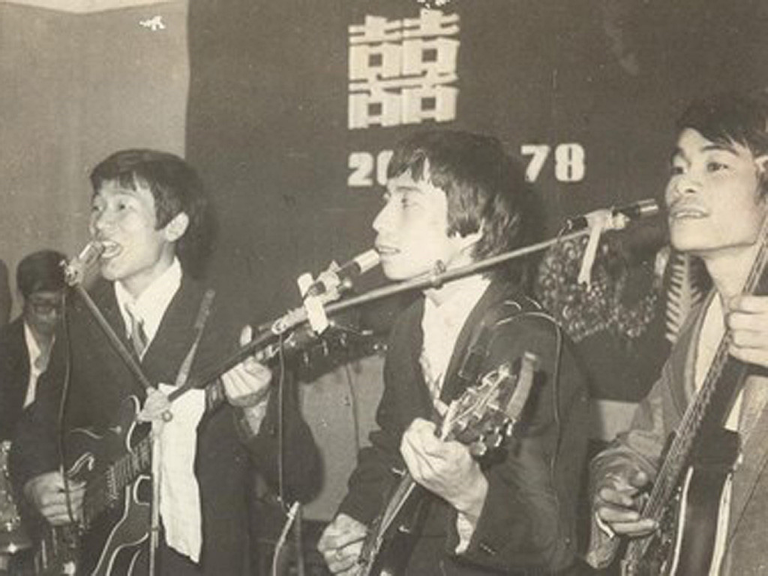
(source, blog.marry.vn)
The 90’s and Early 2000’s
The wedding music was revived and thrived during the 90s and early 2000s. Beside popular Vietnamese songs, couples often chose top hits from the US or UK to play on their nuptials.

(source, doisongphapluat.com)
Modern Days (2010’s – )
Music is simply a must in weddings nowadays. While at the wedding, people often get to listen to music from a pre-set list, or sometimes a live band if the family can pay the big buck to impress guests.

(source, blissvn.com)
The Vietnamese Tea Ceremony and the Wedding Day
Early 20th Century
Traditionally, there are several other “ceremonies” between the tea ceremony and the wedding day. And because of the “showing off” reason, the guest list can be long with family members, friends, neighbors, and acquaintances. People of the past century were all about having a suitable alliance, which explained why the bride’s family often asked for a grand dowry before marrying the daughter away.

(source, vietnammoi.vn)
The 50’s – 70’s
A lot of the traditions lived on while people started embracing more customs from the western world, such as the bride wearing a western-style wedding dress instead of “ao dai”, a stage for the main event on the wedding day, after party dancing, etc.
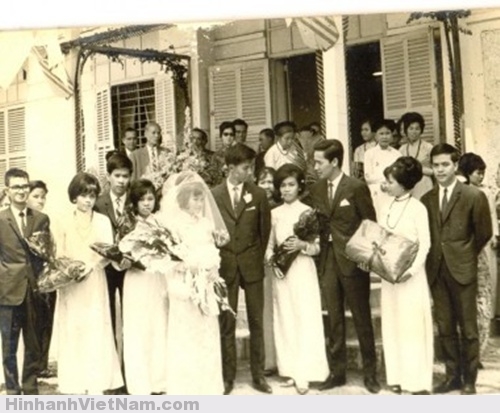
(source, hinhanhvietnam.com)
The “Subsidy” Era (after 1975 – before 1986)
Moderation is key. The tea ceremony might be skipped to make “room” (budget) for the wedding and the bride wouldn’t even wear a dress or “ao dai” on the big day. Plus, the guests are limited to only closest friends and family members.
The 90’s and early 2000’s
The glamorous elements were introduced back to weddings in the 90s and early 2000s since people wanted to bring back the traditions of the past. While the tea ceremony was often held at home, the wedding party started taking place at high-class hotels and wedding centers.

(source, weddingplanner.vn)
Modern Days (2010’s – )
The tea ceremony and wedding day of the 2010s – 2020s are in harmony with the past and the present. Depending on how wealthy the two families are, they can decide to go full-on with all possible ceremonies: first family meet-up – asking for the bride – confirming the wedding – tea ceremony – wedding ceremony.
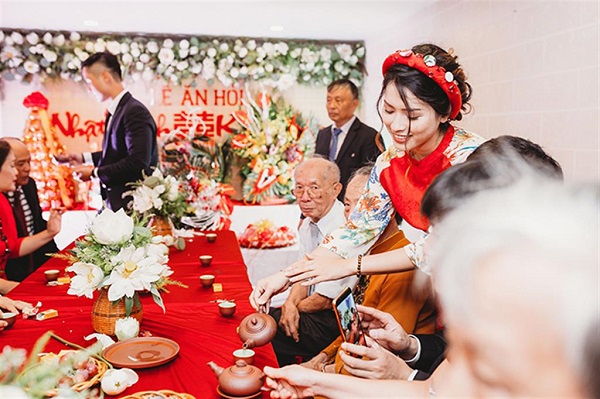
(source, marry.vn)
Final Thoughts
Time may change but weddings in Vietnam retain their value as a measurement of how society perceives the family. There will be tears, laughter, even awkward moments but everything will become fond memories for the couples in the years to come.
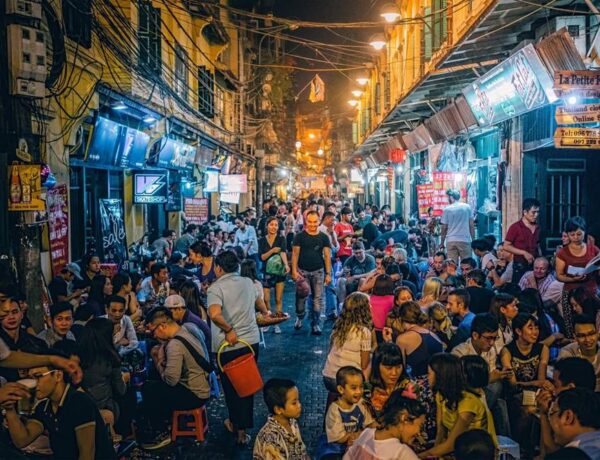
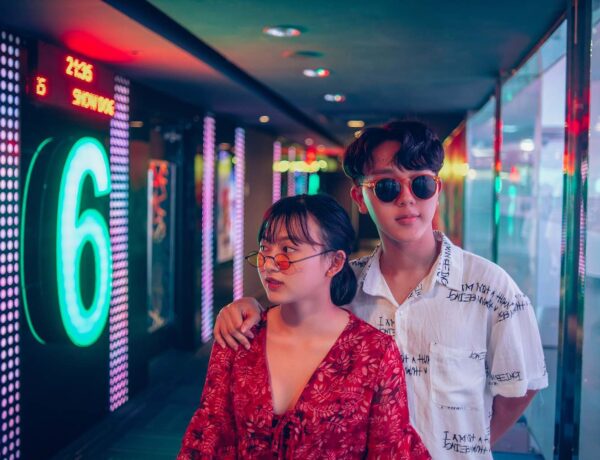

No Comments